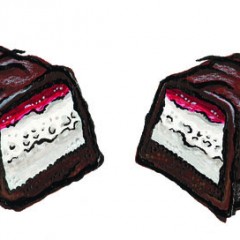
Brews & Bites
SMELL IT! As much as 70-80% of what we perceive as taste comes from our sense of smell. Most of us here at Zingerman’s are familiar with this idea, as Ari’s been telling us for years to “smell it” as a key step in identifying great food. Here’s a fun exercise we do frequently in […]
Read more »
Zingerman’s Art for Sale